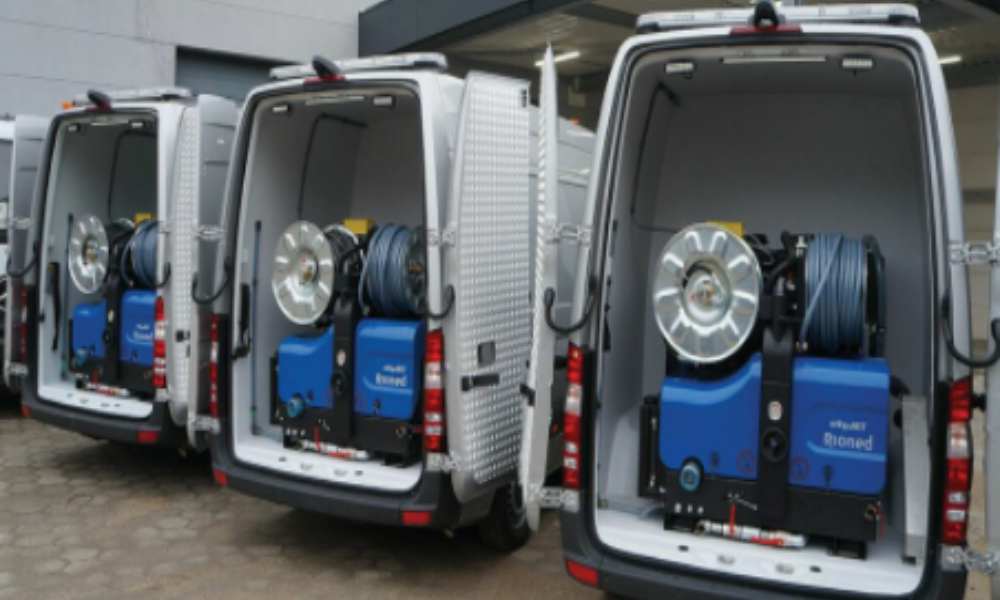If you’re experiencing backed-up sewage in your home, it’s likely that you have a clogged sewage line. This can be an unpleasant and messy problem, but fortunately, there are steps you can take to unblock the line and get things flowing again. Here’s how to unblock a sewage line:
Firstly, locate your sewer cleanout valve. This is usually located outside of your home near the main sewer pipe and may look like a capped pipe sticking out of the ground. Once you’ve found it, remove the cap using pliers or a wrench. Next, use a plumbing snake or auger to break up any blockages in the pipe. Insert the snake into the cleanout valve and turn it clockwise until you feel resistance. Then push gently but firmly until you feel the obstruction give way.
What are the possible causes of a blocked sewage line?
A blocked sewage line is an inconvenience that can disrupt your day-to-day activities. It occurs when the water in your sink, toilet or shower won’t drain as quickly as it should. There are several causes of a blocked sewage line, and identifying them promptly can help prevent extensive damage unclogging the pipe.
One cause of a blocked sewage line is flushing inappropriate items down the toilet. Items such as baby wipes, feminine hygiene products and paper towels don’t dissolve easily and may clog the pipes. Additionally, pouring grease down the kitchen sink can result in blockages since it solidifies in cold pipes. Another possible cause of a blocked sewage line is tree roots. If trees are planted near sewer lines, their roots could penetrate the pipes causing cracks or blockages. In some cases, old pipes may collapse due to wear and tear leading to significant clogs.
How to unblock a sewage line in your home:
If you’re experiencing sewage backups in your home, it’s likely that your sewage line is blocked. Not only is this issue unpleasant and inconvenient, but it can also pose health risks to you and your family. Luckily, there are several ways to unblock a sewage line in your home without having to call a professional plumber.
The first step is to locate the sewer cleanout. This will typically be a white PVC pipe with a cap on it located outside of your house near the foundation. Remove the cap and use a plumbing snake or auger to break up any clogs inside the pipe. If you don’t have access to a plumbing snake or auger, try using boiling water or vinegar and baking soda solution to dissolve the blockage. If these methods don’t work, try using an enzymatic cleaner specifically designed for breaking down organic waste in plumbing systems.
What to do if a sewage line is inaccessible:
When a sewage line is inaccessible, it can create quite the headache for homeowners. Not only does it cause inconvenience and disruption to daily routines, but it can also pose health hazards if left unattended. However, there are several steps you can take to address the issue and minimize its impact.
Firstly, try to locate the access point of your sewage line. This may be in your basement or outside of your home. Once found, remove the cover and inspect the area for any obvious blockages or signs of damage such as cracks or leaks. If no immediate issues are apparent, consider using a plumbing snake or auger to clear out any obstructions within the pipe. If these initial steps do not resolve the problem, it may be necessary to call in professional help. A plumber or septic tank specialist will have the equipment and expertise needed to assess and fix more complex issues within your sewage system.
Tips for preventing sewage line blockages in the future.
If you’re facing an inaccessible sewage line, it’s important to keep calm and take action. While this can be a frustrating issue to deal with, there are ways to prevent blockages and minimize the damage caused by an inaccessible sewage line. Here are some tips for preventing sewage line blockages in the future:
Firstly, make sure that you are only flushing items that belong in the toilet. This means avoiding flushing anything other than toilet paper and human waste down the drain. Items such as baby wipes, feminine hygiene products, or facial tissues should be disposed of in the trash instead of being flushed down the toilet.
Secondly, avoid pouring grease or oil down your drains. These substances can solidify over time and create blockages within your plumbing system. Instead, pour any leftover grease into a container and dispose of it properly.
Final Thought:
Having an inaccessible sewage line can be a major inconvenience for homeowners and businesses alike. However, there are several steps that you can take to address the issue, from hiring a professional plumber to using specialized equipment to clear the blockage. It’s important to act quickly when faced with this problem, as delays can lead to more extensive damage and costly repairs. By following these tips and working with experienced professionals, you can ensure that your property remains safe and healthy for years to come. Don’t hesitate to take action if you suspect that your sewer line is blocked – contact a trusted plumbing service today!




